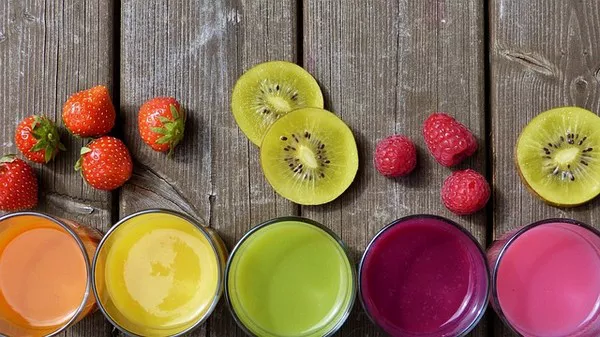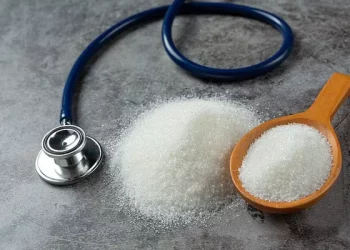Diabetes is a condition that requires careful management of blood sugar levels to avoid complications. One crucial aspect of diabetes management is diet, which plays a significant role in controlling blood sugar levels. While fruits are generally considered a healthy food choice, they contain natural sugars that can affect blood sugar levels. The key to including fruits in a diabetes-friendly diet is understanding which fruits are best suited for maintaining stable blood glucose levels, and how they can be consumed in moderation to promote overall health.
This article aims to provide a comprehensive guide on what fruits are suitable for individuals with diabetes, how they can be incorporated into daily meals, and the factors that influence their impact on blood sugar levels.
Understanding the Impact of Fruits on Blood Sugar Levels
Fruits, in their natural form, are rich in vitamins, minerals, fiber, and antioxidants, which provide numerous health benefits. However, the sugar content in fruits can cause blood glucose levels to rise. The type of sugar found in fruits is primarily fructose, which is metabolized differently than glucose, the primary sugar that affects blood sugar levels.
The glycemic index (GI) and glycemic load (GL) are two important factors that determine how fruits impact blood sugar. The glycemic index measures how quickly a food raises blood glucose levels after consumption, while glycemic load takes both the glycemic index and the carbohydrate content into account, providing a more accurate picture of how a food affects blood sugar levels.
Low GI fruits are digested and absorbed more slowly, resulting in a gradual increase in blood sugar levels. These are typically better choices for people with diabetes.
High GI fruits cause a rapid spike in blood glucose levels, which may not be ideal for people with diabetes, especially if consumed in large quantities.
Fruits to Include in a Diabetes Diet
While all fruits contain natural sugars, some fruits have a lower glycemic index and can be enjoyed in moderation by individuals with diabetes. Here’s a closer look at some of the best fruit choices for diabetes management:
1. Berries (Strawberries, Blueberries, Blackberries, Raspberries)
Berries are among the best fruit choices for people with diabetes. They are low in carbohydrates, high in fiber, and packed with antioxidants, which provide health benefits such as improving heart health and reducing inflammation. Berries have a low glycemic index, making them an excellent option for keeping blood sugar levels stable.
Glycemic Index (GI): 25-40 (depending on the type of berry)
Benefits: High in fiber, vitamin C, antioxidants, and anti-inflammatory compounds.
Berries can be added to smoothies, mixed into yogurt, or enjoyed as a snack on their own. Their natural sweetness can also serve as a satisfying alternative to higher-sugar fruits and desserts.
2. Apples
Apples are a great choice for people with diabetes due to their high fiber content, which helps slow the absorption of sugars into the bloodstream. They also have a relatively low glycemic index compared to other fruits. The skin of apples contains most of the fiber, so it’s beneficial to eat them with the skin on.
Glycemic Index (GI): 28-44
Benefits: Rich in fiber (especially soluble fiber), vitamin C, and antioxidants.
Apples make a convenient and portable snack, and they can also be sliced into salads or paired with a handful of nuts for a balanced snack. Keep in mind that portion control is important, as apples still contain sugar.
3. Citrus Fruits (Oranges, Grapefruits, Lemons, Limes)
Citrus fruits are packed with vitamin C, fiber, and flavonoids, which are beneficial for heart health and have antioxidant properties. Despite their sweetness, citrus fruits have a low glycemic index, making them a diabetes-friendly option.
Glycemic Index (GI): 30-40 (for most citrus fruits)
Benefits: Rich in vitamin C, fiber, and antioxidants.
Oranges and grapefruits can be enjoyed as a snack or added to salads. Drinking fresh lemon or lime juice with water is a great way to stay hydrated while enjoying the health benefits of citrus fruits.
4. Peaches
Peaches are a delicious and refreshing fruit that has a relatively low glycemic index. They are also a good source of vitamins A and C, potassium, and fiber. Peaches provide a natural sweetness without causing a rapid spike in blood glucose levels.
Glycemic Index (GI): 42
Benefits: High in vitamins A and C, potassium, fiber, and antioxidants.
Peaches can be eaten fresh, grilled, or added to a fruit salad. They can also be used in smoothies or as a topping for oatmeal or yogurt.
5. Pears
Pears are another fruit that is high in fiber, particularly soluble fiber, which helps regulate blood sugar levels by slowing digestion and absorption. Pears also have a low glycemic index, making them a good option for individuals with diabetes.
Glycemic Index (GI): 38-42
Benefits: High in fiber (especially soluble fiber), vitamin C, and antioxidants.
Pears can be eaten fresh, or they can be baked or poached for a warm, comforting treat. Pair them with a small portion of cheese or nuts for a balanced snack.
6. Cherries
Cherries have a low glycemic index and are rich in antioxidants, particularly anthocyanins, which may help reduce inflammation and improve heart health. Cherries are also a good source of vitamin C and potassium.
Glycemic Index (GI): 20
Benefits: High in antioxidants, particularly anthocyanins, vitamin C, and potassium.
Cherries can be enjoyed fresh or frozen and are perfect for adding to smoothies, yogurt, or salads.
7. Plums
Plums are another low-GI fruit that can be safely included in a diabetes-friendly diet. They are rich in vitamin C, potassium, and fiber, which helps improve digestion and regulate blood sugar levels.
Glycemic Index (GI): 39
Benefits: High in vitamin C, potassium, fiber, and antioxidants.
Plums can be eaten fresh, dried (without added sugar), or used in cooking. They make a tasty addition to salads, smoothies, or even baked goods.
8. Kiwi
Kiwi is an excellent choice for people with diabetes due to its high fiber content and low glycemic index. This tropical fruit is packed with vitamin C, potassium, and antioxidants, making it a great option for boosting immune function and improving heart health.
Glycemic Index (GI): 52
Benefits: Rich in vitamin C, fiber, potassium, and antioxidants.
Kiwi can be eaten on its own, added to fruit salads, or used as a topping for yogurt or oatmeal.
9. Avocados
While technically a fruit, avocados are different from most fruits because they are low in carbohydrates and high in healthy fats. This makes them an ideal fruit for people with diabetes. The fats in avocados can help improve insulin sensitivity, while the fiber content helps regulate blood sugar levels.
Glycemic Index (GI): 15 (very low)
Benefits: High in healthy fats, fiber, potassium, and antioxidants.
Avocados can be added to salads, used as a topping for toast, or blended into smoothies. They can also be enjoyed with a sprinkle of salt and pepper as a simple snack.
10. Tomatoes
Tomatoes, often considered a vegetable, are technically a fruit. They are low in carbohydrates and have a low glycemic index, making them a suitable choice for people with diabetes. Tomatoes are also rich in lycopene, an antioxidant that may help reduce the risk of certain cancers and heart disease.
Glycemic Index (GI): 15
Benefits: High in lycopene, vitamin C, potassium, and antioxidants.
Tomatoes can be enjoyed fresh in salads, as a snack, or incorporated into sauces and soups.
Fruits to Avoid or Limit in a Diabetes Diet
While many fruits can be enjoyed in moderation, some fruits are higher in sugar and may cause blood glucose levels to rise quickly. It is important to limit or avoid these fruits, especially if you have difficulty controlling your blood sugar levels.
High-GI fruits: Watermelon, pineapple, and ripe bananas have a high glycemic index and can cause rapid spikes in blood sugar. These fruits should be eaten in moderation or avoided if blood sugar control is a concern.
Dried fruits: Dried fruits, such as raisins, apricots, and figs, are concentrated sources of sugar and can cause blood sugar levels to rise quickly. If consumed, they should be eaten in very small portions.
Fruit juices and smoothies: While fresh fruit is healthy, fruit juices and smoothies often contain added sugars and lack the fiber found in whole fruits. Drinking fruit juice or smoothies can lead to rapid increases in blood sugar levels, so they should be limited or avoided.
Tips for Incorporating Fruit into a Diabetes-Friendly Diet
Portion control: The key to enjoying fruit without affecting blood sugar levels is portion control. Stick to small servings of fruit and pair them with foods that are high in protein or healthy fats to slow down the absorption of sugars.
Opt for whole fruits: Whole fruits contain fiber, which helps regulate blood sugar levels. Avoid fruit juices or canned fruits with added sugars, as they can cause blood sugar spikes.
Balance fruit intake with other foods: Incorporate fruits into balanced meals that include protein, healthy fats, and non-starchy vegetables. This can help stabilize blood sugar levels and prevent large fluctuations.
Monitor blood sugar: Keep track of how different fruits affect your blood sugar levels. This can help you identify which fruits work best for your body and adjust your diet accordingly.
Conclusion
Fruits are a valuable part of a healthy diet, even for individuals with diabetes. By choosing low-GI fruits and eating them in moderation, you can enjoy the nutritional benefits of fruits without compromising blood sugar control. Berries, apples, citrus fruits, and other low-GI options provide essential vitamins, minerals, fiber, and antioxidants that can support overall health and improve diabetes management.
As with all aspects of diabetes care, individual preferences and responses to foods vary. It is important to work with a healthcare provider or dietitian to create a personalized meal plan that incorporates fruits in a way that supports optimal blood sugar control and overall health.
Related topics:
What Should a Diabetic with Heart Disease Eat?
























